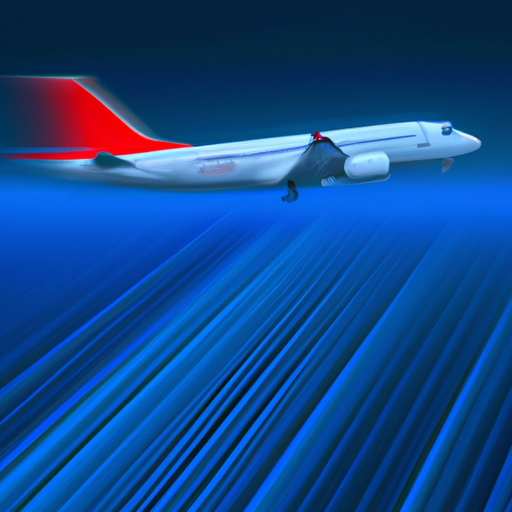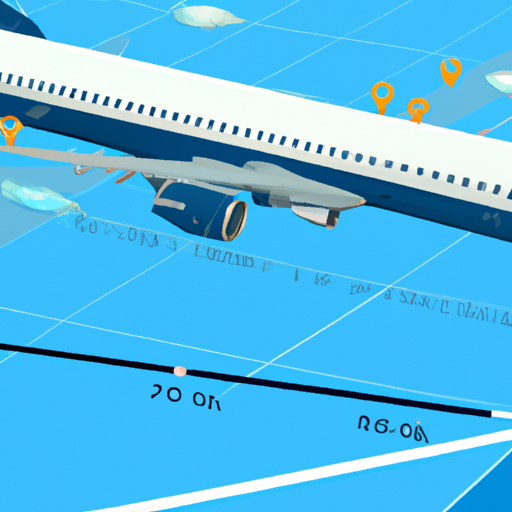
The Importance of Flight Numbers in Air Travel
The process of determining flight numbers may seem like a mundane task, but it plays a crucial role in air travel. Flight numbers are not just random combinations of digits; they are carefully assigned to ensure smooth operations and efficient communication between airlines, airports, and passengers. In this article, we will explore the importance of flight numbers in air travel and also delve into the fun side of this seemingly technical process.
Flight numbers serve as unique identifiers for each flight, allowing airlines and airports to track and manage their operations effectively. They provide vital information about the origin, destination, and schedule of a flight. For example, a flight number starting with a specific digit may indicate a domestic flight, while another digit may signify an international flight. This classification helps airlines and airports streamline their processes and allocate resources accordingly.
Moreover, flight numbers facilitate communication between airlines and passengers. When booking a flight, passengers rely on flight numbers to ensure they are selecting the correct itinerary. It would be quite chaotic if airlines used arbitrary numbers that made it difficult for passengers to identify their flights. By using a systematic approach to assigning flight numbers, airlines make it easier for passengers to navigate the booking process and ensure they are on the right flight.
But let’s not forget the fun side of determining flight numbers! Airlines often get creative when assigning flight numbers, adding a touch of whimsy to the otherwise technical process. Some airlines choose flight numbers that are easy to remember, like 123 or 777, while others opt for numbers that have a special meaning or significance. For example, a flight number ending in 747 might be assigned to a flight operated by a Boeing 747 aircraft, paying homage to the iconic jumbo jet.
In addition to creative flight numbers, airlines sometimes use special numbers for commemorative flights or events. For instance, a flight number like 2021 could be assigned to celebrate the new year, or 1000 might be used to mark a significant milestone for the airline. These unique flight numbers not only add a touch of excitement for passengers but also serve as a way for airlines to showcase their brand personality and engage with their customers.
The process of determining flight numbers involves collaboration between airlines, airports, and regulatory bodies. It requires careful coordination to ensure that flight numbers are not duplicated or confused with existing ones. This is particularly important in busy airports where multiple airlines operate numerous flights daily. By following a standardized process, airlines can avoid confusion and maintain a smooth flow of operations.
In conclusion, flight numbers are not just random combinations of digits; they are essential for the efficient functioning of air travel. They provide crucial information about flights, facilitate communication between airlines and passengers, and contribute to the overall passenger experience. While the process of determining flight numbers may seem technical, it also offers airlines an opportunity to inject some fun and creativity into their operations. So the next time you board a flight, take a moment to appreciate the thought and effort that goes into assigning those numbers, and perhaps you’ll find a little joy in the journey.
Behind the Scenes: How Airlines Assign Flight Numbers

Have you ever wondered how airlines come up with those unique flight numbers? It may seem like a simple task, but there is actually a fascinating process behind it. In this article, we will take a peek behind the scenes and explore the world of flight number assignment. And trust me, there is a fun side to it too!
When it comes to assigning flight numbers, airlines follow a specific system that ensures efficiency and organization. The process begins with the airline’s operations department, which is responsible for managing flight schedules and logistics. They work closely with the airline’s marketing team to come up with flight numbers that not only make sense operationally but also have a certain appeal to customers.
One of the key factors in determining flight numbers is the airline’s hub system. Airlines often have one or more hubs where they concentrate their operations. These hubs serve as the central point for connecting flights, allowing passengers to travel seamlessly from one destination to another. Flight numbers are assigned in a way that reflects this hub system, making it easier for passengers to navigate through the airline’s network.
Another important consideration is the type of flight. Airlines differentiate between domestic and international flights, as well as between regular scheduled flights and charter flights. Domestic flights within a country usually have shorter flight numbers, while international flights have longer ones. This helps passengers quickly identify the nature of the flight and its destination.
But it’s not all about numbers and logistics. Airlines also like to inject a bit of creativity into the process. Some airlines use flight numbers that have a special meaning or significance. For example, a flight number might be chosen to commemorate a significant event or milestone in the airline’s history. This adds a personal touch and makes the flight number more memorable for both passengers and airline staff.
In addition to the flight number itself, airlines also assign a three-letter code to each flight. This code, known as the airline code, helps identify the airline operating the flight. For example, American Airlines is identified by the code “AA,” while British Airways is identified by “BA.” These codes are used in conjunction with the flight number to create a unique identifier for each flight.
Now, let’s talk about the fun side of flight numbers. Some airlines like to have a little fun with their flight numbers by incorporating clever or humorous combinations. For example, a flight from New York to Las Vegas might have the number “777,” a nod to the famous slot machine combination. These playful flight numbers add a touch of whimsy to the travel experience and can bring a smile to passengers’ faces.
In conclusion, the process of determining flight numbers is a carefully orchestrated one. Airlines consider factors such as their hub system, the type of flight, and even their own history when assigning flight numbers. This ensures that the numbers not only make sense operationally but also have a certain appeal to passengers. So, the next time you board a flight, take a moment to appreciate the thought and creativity that went into assigning that unique flight number. And who knows, you might even find yourself on a flight with a clever or amusing number that adds a little extra fun to your journey.
Unusual and Interesting Flight Number Facts
Have you ever wondered how airlines determine flight numbers? It may seem like a simple task, but there is actually a lot that goes into it. In this article, we will explore the process of determining flight numbers and also delve into some unusual and interesting flight number facts that you may not have known.
When it comes to assigning flight numbers, airlines have to consider a variety of factors. One of the most important considerations is the airline’s hub or base airport. Typically, flights departing from the hub airport will have lower flight numbers, while flights arriving at the hub airport will have higher flight numbers. This helps to easily identify the origin and destination of a flight.
Another factor that airlines take into account is the type of flight. For example, domestic flights within a country may have different numbering systems compared to international flights. This helps to differentiate between the two and makes it easier for passengers to identify the type of flight they are booking.
In addition to these factors, airlines also consider the frequency of the flight. For example, daily flights may have different flight numbers compared to weekly or monthly flights. This helps to avoid confusion and ensures that passengers can easily identify the frequency of a particular flight.
Now that we have explored the process of determining flight numbers, let’s dive into some unusual and interesting flight number facts. Did you know that some airlines have special flight numbers to commemorate significant events? For example, Air New Zealand has flight number NZ1, which is reserved for their inaugural flight on a new route. This flight number holds a special significance and is often celebrated by the airline.
Another interesting fact is that some airlines have flight numbers that are considered lucky. In Chinese culture, the number 8 is considered lucky, so airlines may choose flight numbers that include multiple 8s. Similarly, the number 9 is considered lucky in Japanese culture, so airlines may choose flight numbers that include multiple 9s. These lucky flight numbers are believed to bring good fortune and are often sought after by passengers.
On the flip side, there are also flight numbers that are considered unlucky. For example, some airlines avoid using flight number 13 due to its association with bad luck. Similarly, flight number 666 is often avoided due to its association with the devil. These superstitions may seem irrational, but airlines take them seriously to avoid any negative connotations.
In conclusion, determining flight numbers is a complex process that involves considering various factors such as the airline’s hub airport, the type of flight, and the frequency of the flight. Additionally, there are also some unusual and interesting flight number facts, such as special flight numbers to commemorate significant events and lucky or unlucky flight numbers. Next time you book a flight, take a moment to appreciate the thought and consideration that goes into assigning a flight number.


